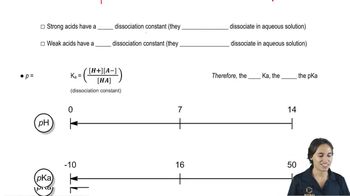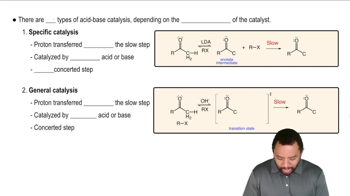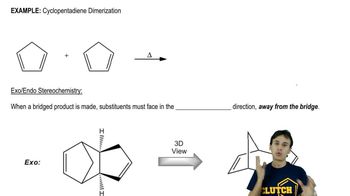Give the products of the following acid–base reactions and indicate whether reactants or products are favored at equilibrium.
b. CH3CH2OH + -NH2 ⇌

 Verified step by step guidance
Verified step by step guidance Verified video answer for a similar problem:
Verified video answer for a similar problem:



 5:11m
5:11mMaster The 3 steps for determining the direction of acid and base equilibrium. with a bite sized video explanation from Johnny
Start learning